Teeka Tiwari recently released an interview-style presentation with John Burke on the Palm Beach Research Group website that centered around the “great unlocking.”
In short, Teeka believes that trillions of dollars worth of investments could essentially be “unlocked” through “tokenization” and blockchain technology. And he discussed various “steps” investors can take to potentially profit from this trend.
The presentation was shrouded in mystery, and Teeka used numerous unusual names for things, which made it difficult to know what exactly his prediction involved.
For example, he talked about “unlocking technology,” a “new stock market,” a “tollbooth investment,” and “Project Hamilton,” among other things.
Nevertheless, I looked into his presentation to get to the bottom of what exactly he was pitching. And in this post, I’ll cut through the hype and break it all down for you.
Breaking Down Teeka’s Tokenization Pitch
The central theme of Teeka Tiwari’s presentation is tokenization, but there are several different aspects to his pitch. So in this section, I’ll break everything down (in plain English) to help you make sense of it. Then, I’ll walk you through what he recommended.
What “Unlocking” Technology Is Teeka Pitching? (Tokenization)
According to investment guru Teeka Tiwari, “real assets” like luxury art, collectibles, private companies, and even real estate could soon be “unlocked.”
“John, that’s where this great ‘unlocking’ we’ve been talking about comes in…
Now, for the first time ever…
REAL assets… like luxury art… REAL art, which used to be the exclusive domain of millionaires and billionaires… are being ‘unlocked’ for the first time ever.”
[…]
“Because, pretty much any asset you can think of can be ‘unlocked’ …
Art—that’s a $65 billion market…
Collectibles— $522 billion…
Private companies—you’ve got trillions there…
Real estate—that’s another $326 trillion…
All these investments, billion (and trillion) dollar markets that used to be reserved for the rich.
Now, the whole world is being turned upside down.
Unlocked.”
What Teeka Tiwari’s talking about here is “unlocking liquidity” through the process of “tokenizing” assets that otherwise would not have been accessible to investors.
In other words, it’s about securitizing “everything.”
And as a result, virtually anyone could “own” a “slice” of a tokenized asset, which could theoretically allow more people to invest in more “stuff,” “opening up the market” to potentially far more investment dollars in the process.
For example, high-priced investments like high-end real estate, fine art, or collectibles that would otherwise have been reserved for wealthy investors could be opened up to everyday investors with a relatively small amount of capital through tokenization.
That’s my take on the general idea, anyway.
Here’s how Teeka puts it:
“I’m talking about ‘Tokenization.'”
[…]
You see, John, tokenization—or, what some people call ‘fractionalization’—allows you to take a small stake in assets that were previously off limits.
[…]
“As State Street says, ‘you can [now own] a building — you can trade a fraction of it without selling a whole building… all-new ways of unlocking liquidity.’
‘Unlocking liquidity.’ That’s the key…
In other words, John. Take a $10 million building.
In the ‘old’ world, if you wanted to buy that building, you needed to either pony up all the cash… or pay a hefty deposit and finance the rest.
Today, though… in this ‘new’ world of tokenization…
You can take that same $10 million building and split it up into 100,000 different ‘shares..’ 100,000 different pieces, digital tokens…
And anyone who wants could buy a single share or token for just $100 each!”
Ultimately, what Teeka Tiwari is describing is an NFT (non-fungible token), a digital token that trades on the blockchains of alternative cryptocurrencies like Ethereum.
NFTs are usually associated with digital art and people making ludicrous amounts of money selling jpeg files. But Teeka’s “tokenization” concept takes the idea of an NFT to the extreme, where virtually anything could become a tradable token – not just art.
There’s a lot of nuance to this topic, some of which I’ll touch on shortly. But if you want to know more about how “blockchain technology” and tokenization works, this article on gemini.com breaks the overall concept down in more detail.
I’ve also written about tokenization when looking into other presentations on this blog. For instance, Jeff Brown, another well-known finance guru in the space, talked about tokenization in his G.T.E Technology pitch, which I wrote about late last year.
However, Teeka made three specific predictions about how he believes tokenization and blockchain technology, in general, could impact the world in the future.
Here’s a quick overview of what he’s predicting:
- One “global impact” Teeka Tiwari sees coming as a result of this so-called “unlocking” technology is the idea that “any idea or business with value can be tokenized,” including things like real estate, art, and collectibles.
- Another “global impact” he discussed was the idea that we are “on the cusp of the next generation” of the internet, which he refers to as web 3.0, a buzzword used to describe a so-called decentralized internet where individuals control their data instead of “big tech” companies.
- And third, Teeka discussed the idea of a “new stock market,” which centers around Teeka’s belief that the existing stock market could essentially be tokenized.
What “New Stock Market” and Patent Is Teeka Tiwari Referring To?
As I was going through this presentation, I noticed that there is more than one version floating around, and not all of them highlight this so-called “new stock market.”
However, one version I came across suggests that a “patent-pending ‘new stock market'” could mint a hundred thousand new millionaires in America. And according to Teeka Tiwari, it could be built using the “unlocking” technology he describes in the presentation.
“Right now, my research shows, and this is very ‘hush hush’ — but…
A new stock market, worth $27 TRILLION, could be in the process of being built right now…
This would unleash a flood of new wealth for early investors…”
What “new stock market” is he talking about?
In short, Teeka suggests that a new stock market could be built that utilizes tokenized assets like the ones we discussed earlier.
According to Teeka, the New York Stock Exchange, which holds $27 trillion in market value, just filed a patent that “reserves their right to become a fully digital marketplace.”
“I’m holding a patent that was just filed by the New York Stock Exchange.
John, the New York Stock Exchange was founded in 1792…
And it houses ALL the world’s biggest companies. I’m talking about companies like Exxon, Citigroup, Pfizer, Walmart, Bank of America, Berkshire Hathaway, JPMorgan, Visa, and more.
All told, that’s $27 Trillion in market value.
Well, get this John…
The NYSE, the patent they just filed… reserves their right to become a fully digital marketplace.
In other words, my research indicates…
They could be preparing to become a full marketplace for tokenized assets!”
What patent is he referring to?
Teeka Tiwari appears to be referring to how, according to MarketWatch, the NYSE filed patents related to cryptocurrency and NFT (non-fungible token) trading.
The article I just linked to suggests that NYSE doesn’t have any immediate plans to launch cryptocurrency or NFT trading, though. So it’s mostly speculation at this point.
Either way, this appears to be the patent Teeka’s referring to.
And he suggests in the presentation that this could eventually lead to a marketplace for tokenized assets where everyday investors can essentially log into their brokerage accounts and buy “shares” of tokenized art, real estate, and even private companies.
Really?
Who knows, anything is possible I guess.
But I personally think that, at best, we’re a long way off from seeing traditional exchanges like the NYSE allowing token trading in the way he suggests.
What Does “Project Hamilton” Have To Do With Anything?
Another thing Teeka mentioned in the presentation is that the U.S. government is working on “Project Hamilton,” which he claims could “tokenize $40 trillion across the globe.”
“John, right now The U.S. Government is engaging in something being called: ‘Project Hamilton’ that could tokenize $40 trillion across the globe.”
What’s he talking about?
Until now, I’d never heard of this project, but it’s a real thing. And there’s a detailed article about Project Hamilton on Forbes, which breaks the whole thing down. So that’s probably the best resource if you want the full breakdown of what the project is all about.
The gist of it is that Project Hamilton is a collaborative project between the Boston Fed and MIT that involves explorative research on a central bank digital currency (CBDC).
The idea of a CBDC isn’t exactly new. But the overall concept is related to “blockchain technology,” and Teeka suggests in the presentation that this project could spark discussion as we “near the peak of the mountain” in terms of global adoption. In other words, the presentation implies that this project is a potential catalyst for tokenization.
In any case, now that we’ve discussed what Teeka Tiwari’s overall “unlocking technology” prediction is all about, let’s look at what he’s recommending.
What Is Teeka Tiwari Pitching? (“4 simple steps”)
One thing Teeka highlighted numerous times in the presentation was that anyone can “get in” to the tokenization trend for as little as $50.
“And most importantly, I can tell you that anyone can invest in this massive trend right now, for just $50.”
He never revealed exactly what investment he was referring to. Instead, Teeka shared numerous hints about what he was recommending and said there are “4 simple steps” you can take to “position yourself for this windfall.”
Three of these “steps” correspond with a different research report he’s put together that breaks down his investment ideas, and one step involves joining his Palm Beach Letter service. So let’s look at each “step” and what he’s recommending.
1. “Tollbooth Profits: The #1 Investment to Surge from The $867 Trillion Tokenization Wave”
The first step Teeka discussed in the presentation relates to a report called “Tollbooth Profits: The #1 Investment to Surge from The $867 Trillion Tokenization Wave.”
Here are the main clues he shared about this pick:
“Well, John, just like a tollbooth takes a cut from any car passing on a highway…
I’ve found a unique play that lets you take a cut of nearly every single new transaction that gets done in the tokenization space.
It’s a platform that allows you to profit no matter what.”
[…]
“Because billionaire Mark Cuban says he’s ‘Very Bullish’ on my top tokenization pick. He claims it’s the one with ‘the most upside’…
Heck, even one of the world’s biggest hedge funds, Three Arrows Capital, just purchased a sizable $400 million chunk of this tollbooth play!”
[…]
“In the last month alone, this tollbooth investment spiked nearly 20%… but experts are reporting it could climb another 400%…”
Based on those clues, it looks like Teeka’s pitching Ethereum.
Here’s how:
- First, the Mark Cuban quote matches.
- Second, Three Arrows Capital reportedly bought $400 million worth of Ethereum in 2021.
- Third, time.com published an article stating that “experts say” Ethereum could grow in value by “as much as 400% in 2022.”
- And finally, while the price of Ethereum has fallen recently, as have many other cryptos and bitcoin, it did rise from March to April. And even though Teeka’s presentation was released in May 2022, it may well have been recorded in April. So, my point is that his “spiked nearly 20%” clue could still match depending on when he recorded the video.
Another reason Ethereum makes sense is that many NFTs exist on Ethereum’s blockchain, so it would line up with his so-called “tollbooth” statement in that buying Ethereum could (theoretically) allow someone to take advantage of his overall tokenization thesis.
One thing that doesn’t fit is the price, though.
Ethereum is trading around $2,000 (ish) at the time of writing.
However, one thing I’ve seen numerous other finance gurus do is recommend the Grayscale Ethereum Trust (ETH) instead of Ethereum itself. This is a way to gain exposure to Ethereum’s USD price without buying the asset itself, and ETH saw a price of just under $50 late last year, so that could be what he’s teasing.
That’s just a guess, though.
The only way to know for sure would be to read the “tollbooth profits” report I mentioned earlier, which comes with a $49 subscription to The Palm Beach Letter.
2. “3 Tokens That Will Define the New Digital Era”
The second “step” Teeka mentioned in the presentation involves three “super-tiny token plays” that he believes “could go absolutely gangbusters.”
He didn’t reveal what these are or provide any tangible clues, so I have no idea what they are, other than that they’re small altcoins (alternative cryptocurrencies).
It’s true that some people have made lots of money gambling investing in different altcoin projects, and there are numerous “gurus” in the finance space that recommend them.
For example, I recently wrote about Ian King’s “Next Gen Coin” pitch, and before that, I wrote about Charlie Shrem’s Crypto Cash Calendar. Both of which focused on altcoins.
However, while I do have a position in bitcoin, I avoid the altcoin space because I believe that many of them are either scams or overhyped get-rich-quick schemes.
That’s me, though. I’m sure many would disagree with my opinion, and that’s fine. But I think most people who’ve spent more than five minutes in the space would agree that, at the very least, the “crypto” space is extremely volatile and risky.
Of course, there’s risk involved with bitcoin (and stocks), too. But the difference with bitcoin is that, in my opinion, it’s a property with real fundamental value. In contrast, many altcoins are hyped-up schemes that have zero substance. In other words, they’re shitcoins.
3. The Palm Beach Letter
The third “step” Teeka outlined in the presentation is to join his flagship service, The Palm Beach Letter, which costs $49 for the first year if you join through the presentation.
The Palm Beach Letter is an investment research service focused on emerging trends and other investments Teeka Tiwari is tracking, including crypto and stocks.
Each month, Teeka shares his latest investment insights and recommendations in the newsletter. Subscribers also get access to updates on Teeka’s picks, access to the model portfolio, and research reports (including the reports mentioned earlier).
So this is the service you’d need to join if you wanted to find out what investments he’s recommending and get all the details about each.
4. “Two Tokenization Plays that Could Change The World”
The last step Teeka mentioned involves another two investments he’s recommending. As before, he didn’t share many clues about these, so it’s unclear what he’s pitching.
“These two investments could directly benefit from Project Hamilton and the tokenization trend.
And, in the report, you’ll get all the details and the two tickers for these plays.”
Based on that limited clue, he could be pitching stocks or altcoins, but my guess is that these two picks could be stocks related to crypto, like a crypto exchange, for example. I say this because immediately after Teeka shared that hint; John Burke said the following:
“That’s awesome, 3 very different ways to grab massive tokenization profits in the weeks to come…”
Since the first pick looks like Ethereum, and “step two” was about three altcoins Teeka’s tracking, a “very different” way to invest in tokenization could be through stocks. I guess it’s also possible Teeka’s recommending bitcoin, but that might be stretching it a bit.
Either way, Teeka reveals everything in the reports I listed, so the best way to find out what he’s teasing would be to join Palm Beach Research and read his research reports.
Recommended: Go here to see my #1 rated stock advisory of 2024
Is Teeka’s Tokenization Presentation Legit?
I don’t think Teeka Tiwari’s tokenization presentation is a scam, but I do think it’s important to take the marketing side of things with a pinch of salt.
For example, the part in the presentation about an “$867 trillion tokenization wave” might be overstating the potential a bit considering that works out to almost ten times the value of global GDP in 2021.
I also want to point out that there are still a lot of uncertainties around “tokenization” in general, and the main one that comes to my mind relates to ownership.
What do I mean? Well, it’s one thing to own an NFT (non-fungible token) that represents “shares” in something, like a “slice” of real estate, for example. But that doesn’t necessarily mean you have ownership rights in the physical property it supposedly represents.
In reality, what you own is a token on a blockchain.
Here’s a snippet about NFTs from the World Economic Forum that sums it up well:
“One of the key issues is the often widespread confusion surrounding the rights that buyers acquire when they purchase an NFT. Some buyers think they acquire the underlying work of art, and all its accompanying rights. However, in reality, they are simply buying the metadata associated with the work; not the work itself.”
Source: weforum.org/agenda/2022/02/non-fungible-tokens-nfts-and-copyright
Of course, this does depend on the individual “token” and details surrounding the “investment,” and the above WEF snippet is more about art-based NFTs, whereas Teeka’s pitch centered around the tokenization of “everything.” But my point is that tokens do not necessarily represent ownership in anything other than the token itself.
Another thing to consider is that there’s more than one blockchain that these tokens trade on. Most NFTs trade on the Ethereum blockchain, but there are many others.
So, in reality, buying a token of something on a particular blockchain means you are tying your investment to the success of one particular altcoin project.
And as I explained earlier, altcoins aren’t exactly risk-free assets. So you could theoretically have an entire portfolio of tokens that could be doing really well, but then the altcoin they’re associated with fails, and you lose everything.
So my point is that, as it stands, there are many uncertainties about how “tokenization” will evolve and many potential risks to consider in the overall crypto space.
Bottom Line
Teeka Tiwari’s “unlocking” presentation centers on tokenization and how he believes everything from art and collectibles to ideas, businesses, and real estate could eventually be “unlocked” through tokenization, becoming potential investments as a result.
Only time will tell if Teeka’s tokenization prediction plays out or not, and if it does, whether or not that will be a net positive. But it wouldn’t surprise me if more and more “stuff” became tokenized and traded on different blockchains in the future.
As for what investments would do well if Teeka’s tokenization prediction unfolds, that’s even less certain, especially over the long term. No doubt some could do well betting on altcoins and tokenized assets, but there could also be many that lose money.
What do you think? Are we really on the cusp of a fully tokenized world? Or is this just another passing fad that will end up fizzling out? Chime in below.



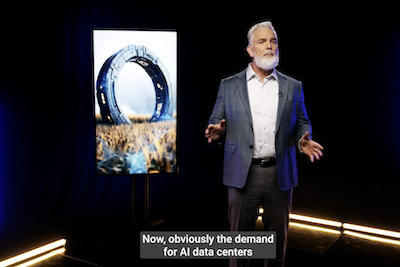

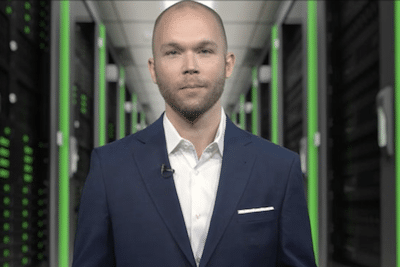
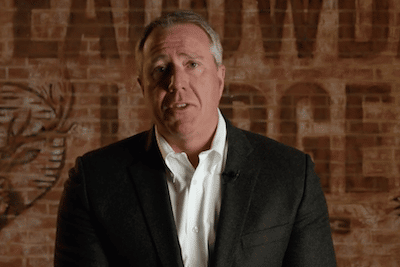


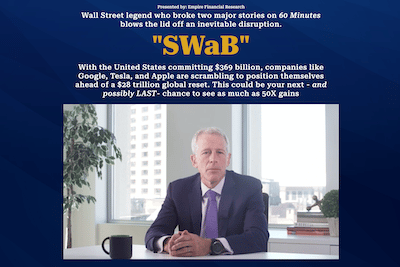

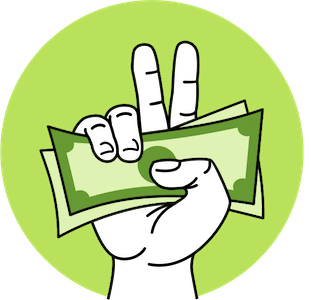
Please note: By submitting a comment using the above comment form, you confirm that you agree with the storage and handling of your data by this site as detailed in our Privacy Policy.